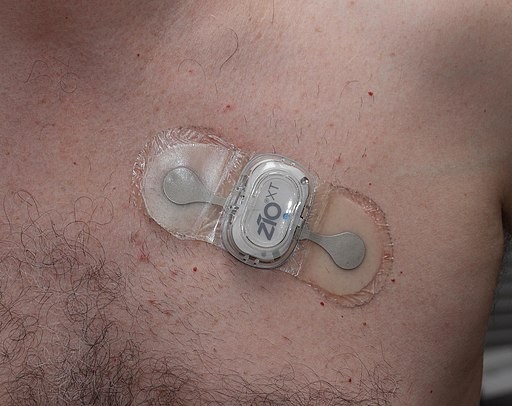The healthcare industry accounts for 8% of the total waste emissions in the U.S. and remains the largest waste-contributing sector globally. Most medical supplies are made of plastic because this material is inexpensive and relatively easy to sterilize. Because of this, plastic accounts for the majority of waste produced by hospitals. Unfortunately, 91% of plastics are not recycled and end up in landfills or the surroundings.
In 2019, an estimated 53 million tonnes of electronic waste was discarded by humans. This figure is expected to rise by 38% in 2030. Because of this, there is a need to develop small and wearable electronic devices since their small and complex parts make them difficult to recycle.

(Photo: Wikimedia Commons/ KamenG)
The Need for Better Device
A new sustainable electrocardiogram (ECG) patch was developed by the VTT Technical Research Centre of Finland to act as an alternative to traditional plastic patches in wearable skin applications. Their main goal is to lessen the carbon footprint of plastics and electronics in the healthcare industry, considered the largest waste-producing sector in the world.
The device developed by research scientists at VTT is the first of its kind, a hybrid wearable ECG patch made of removable and reusable electronic parts and a biodegradable disposable skin patch. The skin patch is made of nanocellulose without using any plastic additive. The plant-based materials allow the device to decompose in the soil and be converted into pulp using a controlled recycling process. The conductors and the electrodes are both visible in the skin patch.
This property of the ECG patch being strong, transparent, and breathable, is coupled with the ability to be printed. The biodegradable ECG patch's characteristics make it useful in printed energy storage and harvesting devices.
The researchers made the biodegradable ECG patch modular so that the electronic components can be easily removed and used again.
The researchers are hopeful about the future contribution of their invention since it can be applied to various wearable devices.
READ ALSO: New Nanowire Sensor Can Monitor Cardiac Tissue Activities
The Rising Demand for ECG Patch
ECG is one of the most common and effective methods to monitor heart conditions. It works by recording the electrical signals of the heart to monitor and assess heart conditions. Conventional ECG patches are made of electrical components placed on a substrate made from plastic-based ingredients. It has gained popularity due to its characteristics of being reusable and rechargeable with less disruption.
Another type of portable ECG called the Holter monitor is widely used in recording the heart's electrical activity. The healthcare provider might recommend using this device for a number of reasons, such as evaluation of chest pain, identification of irregular heartbeats, and assessment of future risks.
The demand for sustainable ECG patches will rise in the coming years. In 2022, the global ECG patch and Holter monitor industry were valued at $1.2 billion and is predicted to grow by 20% from 2023 to 2030. The rising global need is due to the prevalence of health conditions such as atrial fibrillation and cardiovascular diseases.
RELATED ARTICLE: Smartwatches and Fitness Wearables Can Monitor Irregular Heartbeats, Study Suggests
Check out more news and information on ECG Patch in Science Times.

